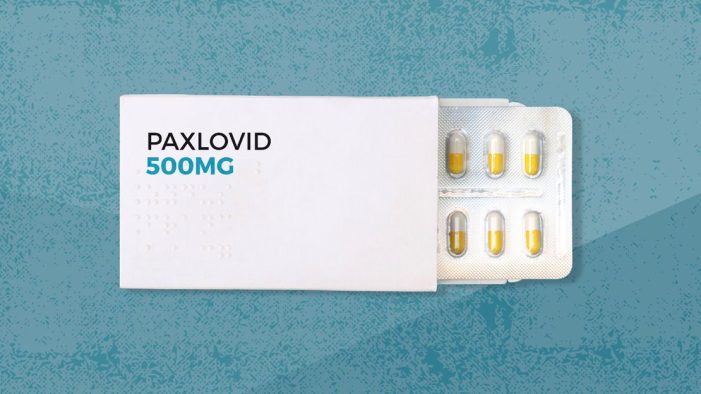Paxlovid May Interact With Common Heart Drugs and Cause Blood Clots, Bleeding, Arrhythmia and Muscle Weakness

Findings from a new study published in the Journal of American College of Cardiology found that administration of the anti-viral drug Paxlovid can interact with several commonly prescribed cardiovascular drugs and be associated with an increased risk for blood clots and bleeding, which are termed clinically relevant drug-to-drug interactions (DDI).1
Manufactured by Pfizer, Paxlovid is supposed to stop the SARS-CoV-2 virus from replicating in the body and is used to treat symptomatic, non-hospitalized patients with SARS-CoV-2 infection, who are at high risk of progression to severe COVID-19.2 It is usually taken orally at home for five days. The drug received Emergency Use Authorization EUA) from the U.S. Food and Drug Administration (FDA) in December 2021.3
The study’s senior author Sarju Ganatra, MD, who is a cardiologist with Lahey Hospital and Medical Center in Burlington, Massachusetts, said in a statement from the American College of Cardiology (ACC):
Awareness of the presence of drug-drug interactions of Paxlovid with common cardiovascular drugs is key. System-level interventions by integrating drug-drug interactions into electronic medical records could help avoid related adverse events.4
Severe Drug-to-Drug Interactions Between Paxlovid and Common Blood Thinners, Statins and Heart Drugs
The study lists a number of cardiovascular drugs and states whether they are safe to take simultaneously with Paxlovid or whether they could have potential drug interactions.5
For anti-arrhythmic agents used to manage abnormal heart rhythms, physicians are advised by study authors to consider alternative COVID therapies and avoid co-administration of these medications with Paxlovid, with the exception of Sotalol.6
For antiplatelet agents used to thin the blood during the treatment of coronary artery disease, especially if a patient has a stent, study authors suggest that aspirin and prasugrel are safe to co-administer with Paxlovid. However, the researchers found there is an increased risk of blood clots when Paxlovid is given with clopidogrel and there is an increased risk of bleeding when Paxlovid is given with ticagrelor.7
For statins, which are drugs that lower cholesterol in the blood, co-administration of simvastatin or lovastatin with Paxlovid can lead to increased plasma levels and subsequent muscle weakness (myopathy) and rhabdomyolysis, a painful condition in which the breakdown of muscle tissue releases a damaging protein into the bloodstream. Therefore, the study authors say that simvastatin and lovastatin should be stopped before doctors prescribe Paxlovid. Other statins are believed to be safe when taken with Paxlovid.8
For the drug ranolazine, which is used to treat angina and other heart-related chest pain, the researchers recommend temporary discontinuation of ranolazine if Paxlovid is prescribed because it can increase the risk of arrhythmia, which is an irregular heart rhythm.9
Patients taking an immunosuppressive drug after heart transplant should not be treated with Paxlovid because the combination of these drugs can cause plasma levels to rise dramatically.10
Biden Temporarily Taken Off Heart Medications Prior To Taking Paxlovid
When President Biden tested positive for SARS-CoV-2 in July 2022, his physician temporarily took him off his heart medications Crestor (a statin) and Eliquis (an anticoagulant) prior to prescribing Paxlovid.11
Jayne Morgan, MD, a cardiologist and clinical director of the COVID Task Force at Piedmont Hospital/Healthcare in Atlanta, Georgia said:
There are some drugs that you simply will not be able to stop, and a doctor will have to make a decision. It’s a risk-benefit analysis.12
If you would like to receive an e-mail notice of the most recent articles published in The Vaccine Reaction each week, click here.
Click here to view References:
No comments:
Post a Comment